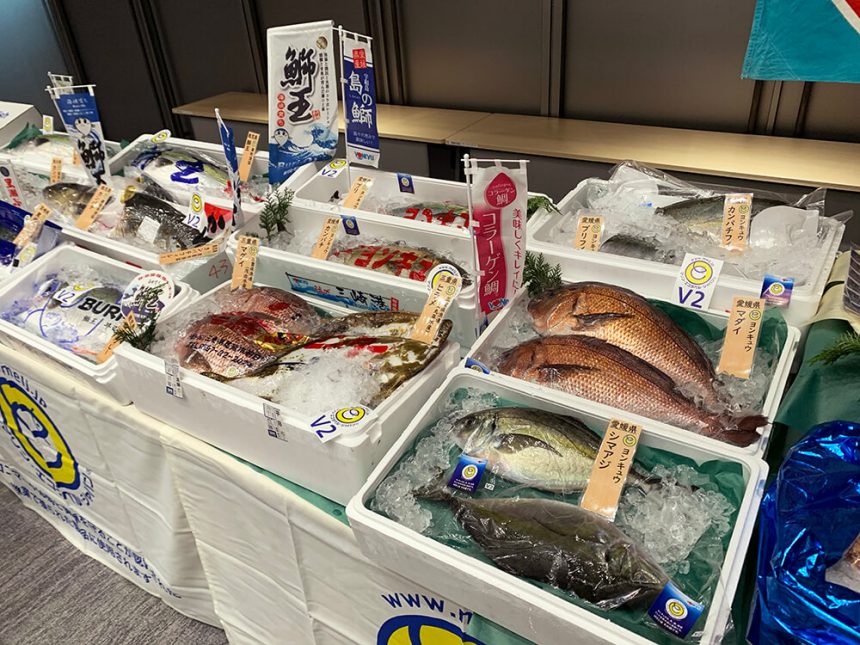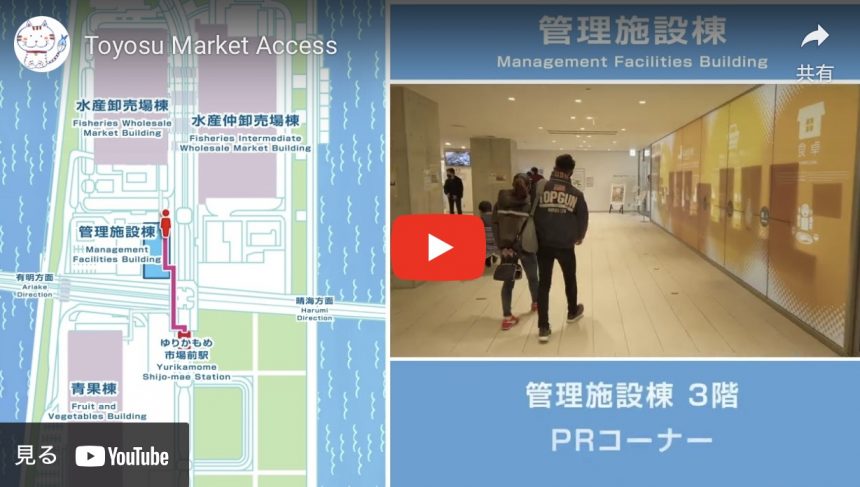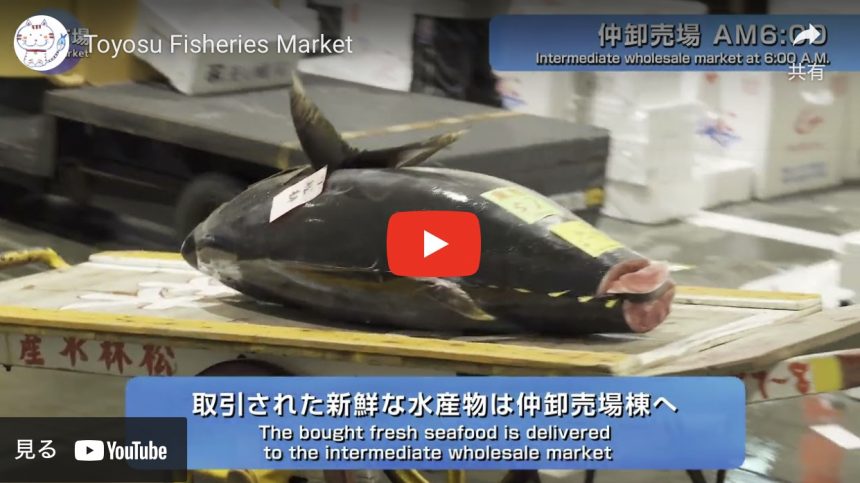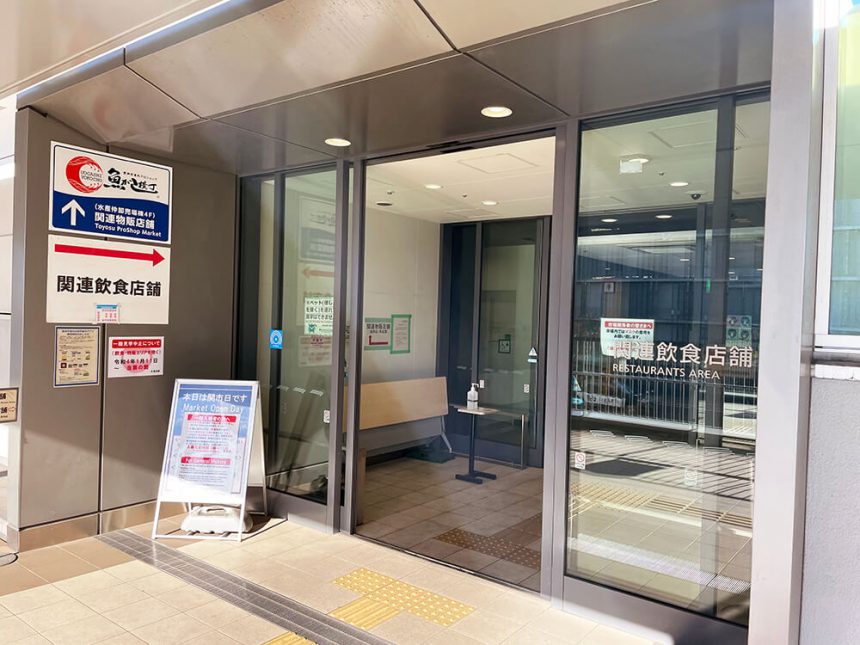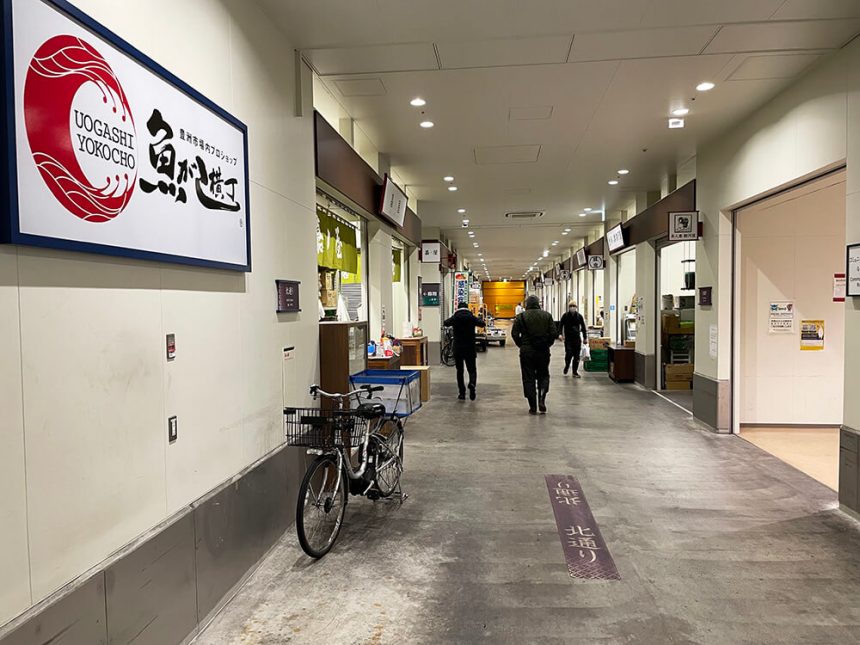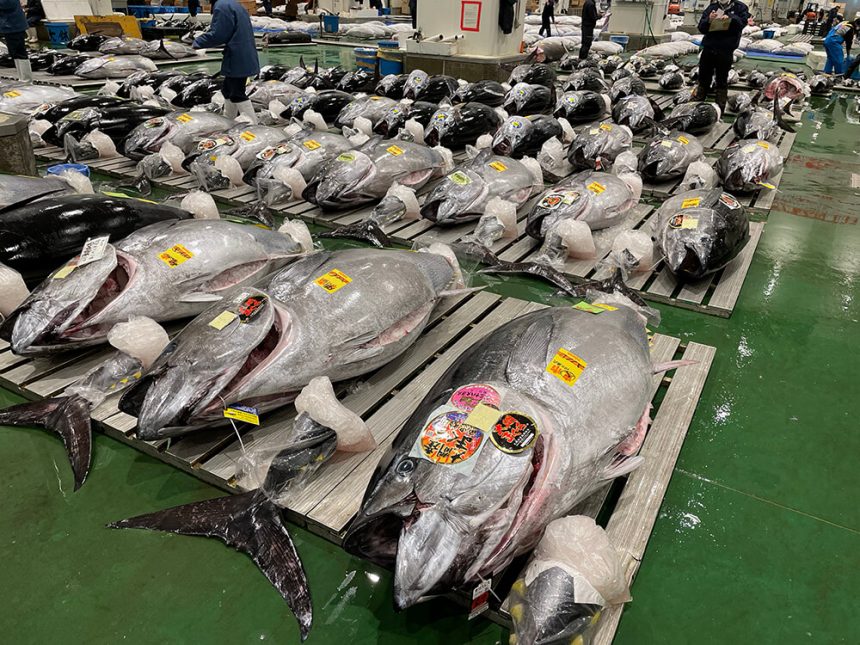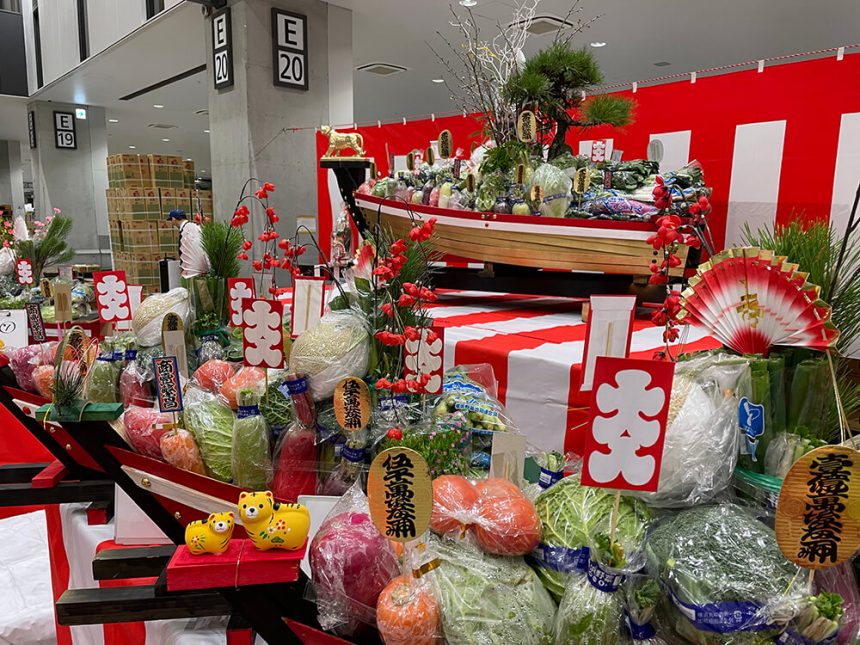Intermediate Wholesalers
- Knowing the customer
- A demanding job
Toyosu Market’s intermediate wholesalers, or nakaoroshi, have the key responsibility of acting as middlemen between wholesalers and small- to medium-sized retailers and restaurants. Their job consists of sourcing the best possible product for their clients at the optimal price—a task that requires not only a highly trained eye for seafood or farm produce, but also a sophisticated understanding of what constitutes a fair price and familiarity with the client’s preferences and circumstances.
Knowing the customer
Intermediate wholesalers mainly act upon orders placed by their clients, participating in auctions at the market and dealing directly with wholesalers to procure the products clients have requested. Many nakaoroshi also buy a certain quantity of products from wholesalers to sell to buyers visiting the Fisheries Intermediate Wholesale Market Building, where the middlemen have stalls of their own that function as workplaces, offices, and storefronts. The Intermediate Wholesale building is connected to the Fisheries Wholesale Market Building by a climate-controlled passage, allowing the intermediate wholesalers to transport their purchases directly to their stalls for processing.
Each of the intermediate wholesalers at Toyosu specializes in one or several of the 10 product categories of seafood as classified by the market, such as salted and/or dried fish, large fish (mainly tuna), crustaceans, octopus, and “specialties” (premium seafood used mainly for sushi, including clams and sea urchins). Intermediate wholesalers usually have a loyal clientele that relies on them to provide the best possible product to serve in their restaurants or sell at their shops. Many Toyosu middlemen serve overseas clients, too: for example, certain intermediate wholesalers specialize in supplying fresh tuna to sushi restaurants in Singapore and Hong Kong.
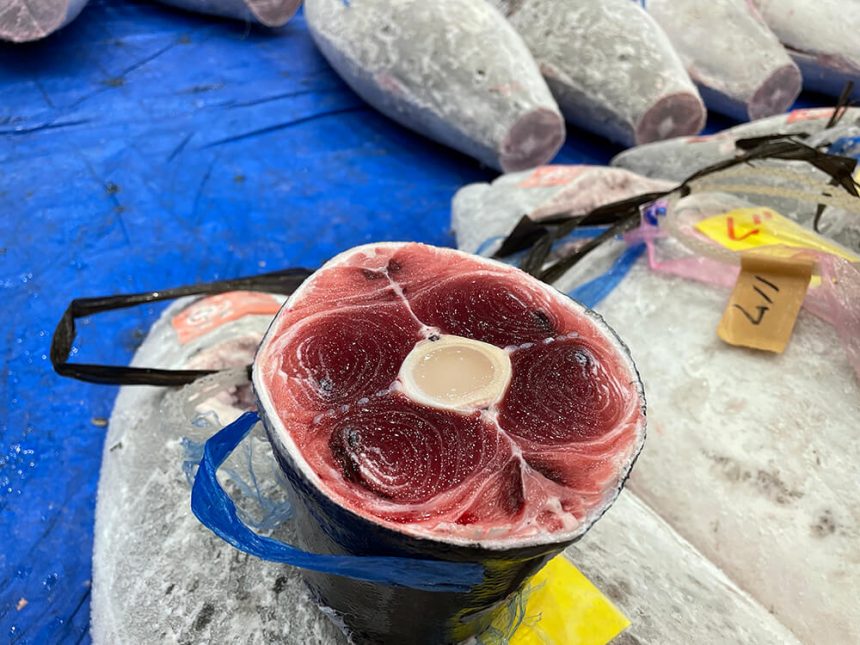
A significant part of the job the nakaoroshi perform involves procuring the appropriate quantities for each client—which range from major restaurant chains to tiny sushi bars and neighborhood fishmongers—and preparing the product to the client’s standards. For example, different chefs require fish to be cut in different ways depending on the meals they will be serving. Some clients will ask for their fish to be left whole, whereas others will want theirs cleaned, gutted, and sliced. Even large restaurants or shops buying a whole tuna will usually need the nakaoroshi to use their expertise and specialist equipment—sword-like knives for raw tuna, chainsaw-like cutters for frozen ones—to cut the fish into at least four pieces, simply because handling a whole 200-kilogram fish would be impractical for most food professionals outside the market.
A demanding job
A typical working day for an intermediate wholesaler starts in the early morning hours. Many nakaoroshi arrive at the market around 1:30 a.m. to confirm orders from the previous day, inspect the produce being put up for auction by wholesalers, and plan out their purchases before placing their bids at the auctions from around 5:30 a.m. They then load the items they have procured onto trucks to be delivered to clients; after that, they might do some paperwork at their shop-office before ending the day around 11 a.m. It is a demanding lifestyle, but one that remains attractive for those passionate about seafood—from young entrants to veterans with decades of experience.
